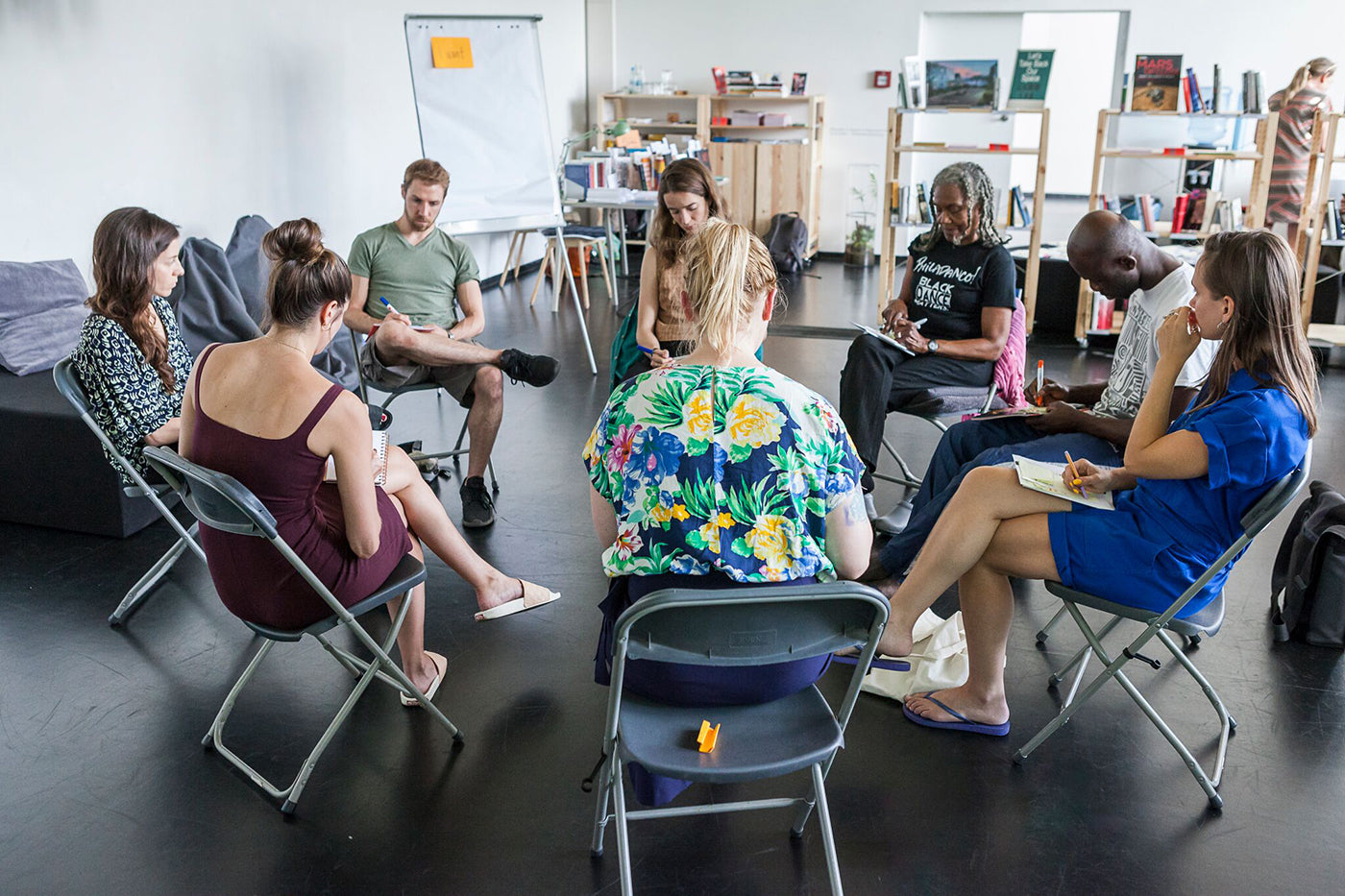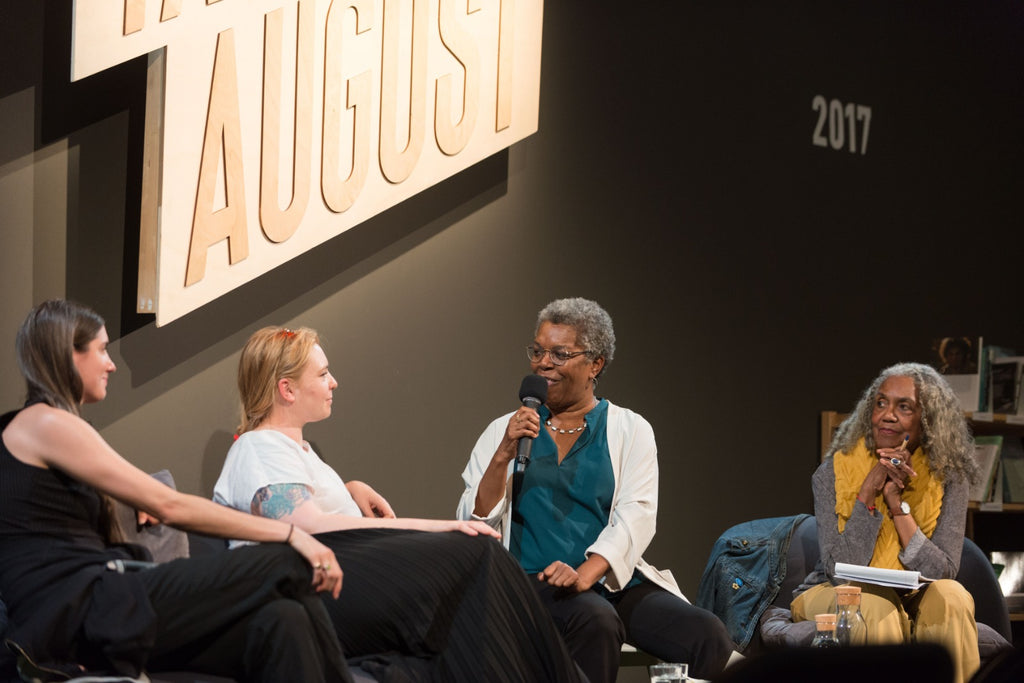They began by posting a series of call outs, largely focused on misogyny and sexual harassment, sharing damaging anecdotes from dancers who wanted to tell their stories. A few memorable phrases: “Girls you need to do something about your muffin tops. No one wants to see that onstage”; “the reason you can jump so high is because you have boy legs” said to a seven-year-old; and “the dance partner whose package always finds its way directly between the cheeks of my ass unnecessarily.” This was in 2017 when the headlines were full of stories about the abuse of powerful men like Larry Nasser, Geraldo Rivera, Woody Allen, and Harvey Weinstein. From there, they began hosting workshops.
Seven years and several residencies later, Whistle has taken their own massive collection of resources—including their outline for facilitating a “Messy Talk” as a first step to incite change—and combined it with an intersectional series of invitations for undoing ableism, dismantling white supremacy and hierarchy, and embodying anti-capitalist processes. There is even a guide to somatic astrology to help liberate dancers from the impact oppression can have on the body.
“The curriculum is not only our work, our work is just a part of it. It's the work of all the people that we learned from and that we continue to learn from,” said Chiaverini.
“There's a lot of vulnerability and unlearning,” said Doty. “I think a lot of the materials that we have collected together—like Sydnie L. Mosley's Eight Ways to Decolonize the Classroom, inside of The Dance Union’s Town Hall—put a lot of emphasis on examining the ways that you grew up, your relationship to authority and the way that you think, for example, that discipline gets done. It is very vulnerable to realize that the things that you've done, have been potentially incorrect and hurt people. Something that was really important to me in making these resources is realizing that there is a real reality of harm. And we do it to each other. It's not something one directional, where we are receiving harm. All of us have the ability to also impact others harmfully. Not only do you have to unlearn a lot of your relationship to the way that you were taught, but then you have to understand that there's a whole accountability process involved.”
The questionnaires and journaling prompts on the website are opportunities for self-reflection and exploration intent on helping all members of the dance industry navigate these tricky waters of vulnerability and accountability, including setting boundaries, talking about consent and appropriation, imagining new ways of working, and managing self-care. There are glossaries with words that can help define experiences that seem inappropriate or unwanted but feel hard to categorize, guides for speaking up, and the support of other artists’ stories and advice.
Unfortunately, this toolkit cannot solve the ungenerous math that belies the unsustainable nature of America’s nonprofit arts sector. But it does put forward a path of transparency that may have more people asking questions about who bears the brunt of such shortfalls.
While Chiaverini and Doty saw university dance programs as a likely place for putting this curriculum into practice, they say so far the response has been chilly. Likewise, it remains unclear whether these resources will find their way to the leaders of arts organizations.
“It’s about responsible working structures,” said Chiaverini. “And that's why the curriculum is not just for dancers but dancer adjacent, performance adjacent, because it's meant to talk to all the admin people, all the grant writing people, all the budget making people.”
“It's a lot easier to have a checklist than it is to deeply unlearn racist behaviors, or sexist ideas, or things that are transphobic or ableist,” added Doty. “It’s just so much easier to be like…and now we have ramps. (Please, have ramps.) In reality, everything has to change. So regardless of whether it's an individual dancer versus someone who's leading an institution, everyone has to, to some degree, be on board.”
Ultimately, Whistle doesn’t claim to know what making these wholesale changes will result in. Will it mean less dance is produced if more people insist on equitable protocols and remuneration? And always, the question: can the rigorous aesthetic values of dance, as so many of us have known them for so long, remain if training tilts toward the individual, and the humane?
For a field that has long fed itself on chains of command and obedience, and the firm answers of a hierarchy, this lack of certainty may be the ultimate provocation. There is no sure way of knowing what a corps de ballet or ensemble might look like if more dancers begin to explore the fertile ground of their own experience, expertise, and desire for equity. I, for one, am eager to follow wherever this leads.





comments